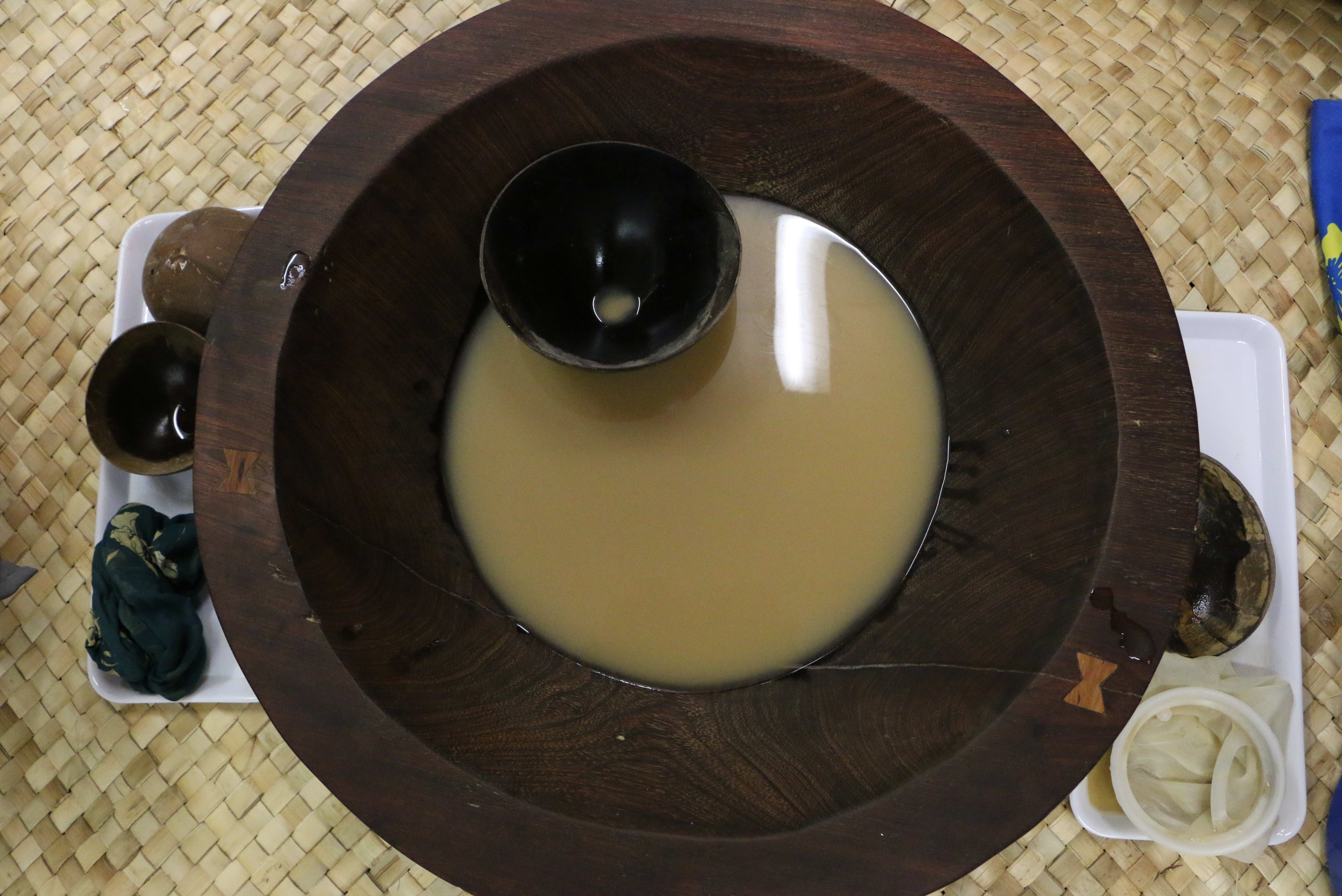
A tanoa (kava bowls) with a bilo (kava cup). Normally the lowliest person serves kava to the circle. Photo: RNZ Daniela Maoate-Cox
Every week around 20,000 Kiwis drink the legal soporific relaxant kava.
Dr Apo Aporosa has been studying use of this tropical plant and the rise of kava clubs in Aotearaoa.
He tells Bryan Crump that kava-drinking is part of the Pasifika cultural fabric and lends itself to “good-quality, deep conversations”.
Describing its effects, Dr Aporosa quotes –“Kava induces a warm, cheerful, but lazy feeling, making people sociable, but not hilarious or exuberant or emotional, and not interfering with reasoning.”
“I love sitting down having good discussions with people and walking away knowing I haven’t misbehaved, nobody else has misbehaved – and you wake up the next morning without any regrets,” he says.
Kava-drinking has been popular throughout the Pacific Islands for about 3000 years.
Missionaries eradicated it on some islands, such as Tahiti and Rarotonga, yet in Fiji, Vanuatu and Tonga it thrives still.
Early Māori may have brought kava to New Zealand from Hawaiki as it was often carried to protect a journey, Aporosa suggests. He sees kava culture reflected in the deep value Māori place on respect for others.
Kava clubs are commonly called ‘kalapu’ – a Tongan word – and can be found all over the country, even as far as south as Invercargill, Aporosa says.
“I think it comes down to if you know Islanders, you can connect to them and you can kava with them.”
Kava club conversation can include politics, news from the Pacific islands and talk of notable Pacific Islanders such as boxer Joseph Parker.
“Kava venues are places of respect. We respect kava, we respect one another. It’s where our Pasifika values come out.”
Kava-drinking is not usually a solo activity, especially for Fijians who associate lone kava-drinking with witchcraft.
Despite this, Aporosa doesn’t have a problem with the emerging trend of palangi drinking kava using kava privately for its relaxation and medicinal properties.
Young children are blessed with kava and given it as medicine and it remains Kava part of the Pacific Island cultural fabric from birth to death, he says.
“When I die, the gang here in Hamilton, they’ll present kava to send me on my way.”
Daniela Moate-Cox explored the effects of kava on driving earlier this year.

